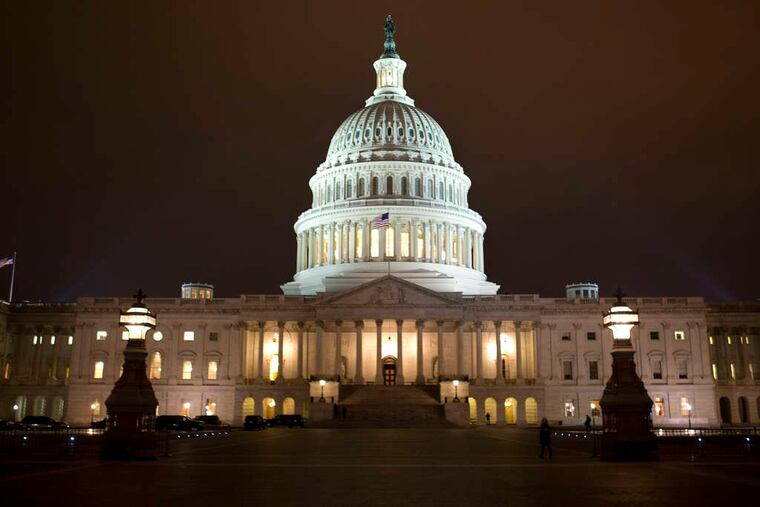Population's growth = less representation
By Steven Conn In the second-most watched case at the Supreme Court last week, the conservative justices seemed skeptical about an experiment taking place in Arizona. Voters there, tired of the way partisan politicians had gerrymandered congressional districts, decided in 2000 to turn over the job of redistricting to an independent commission.

By Steven Conn
In the second-most watched case at the Supreme Court last week, the conservative justices seemed skeptical about an experiment taking place in Arizona. Voters there, tired of the way partisan politicians had gerrymandered congressional districts, decided in 2000 to turn over the job of redistricting to an independent commission.
This upset Arizona's Republican establishment because, given the politics of that state, they were the ones voters essentially took redistricting away from. They sued, and now the Supreme Court looks likely to hand the maps and magic markers back to the state legislature. The ruling could affect several other states that have also tried to take the partisanship out of redrawing the boundaries of congressional districts.
The constitutional question, at least as voiced by the court's conservatives, is simple: The Constitution clearly states that the "times, places, and manner of holding elections for senators and representatives shall be prescribed in each state by the legislature thereof." Each state's legislature, in other words, has a broadly defined prerogative here.
In practice, of course, the way districts are drawn has become an exercise in partisan fractal geometry more than equitable representation. In this sense, the gerrymandering of congressional districts would seem to violate the Apportionment Act of 1911, in which Congress decreed that districts must comprise "a contiguous and compact territory." No one could defend today's district boundaries as "contiguous and compact" with a straight face.
But as the court considered constitutional questions, I got curious about mathematical ones. Here are a few numbers I discovered: 30,000, 61,000, and 710,000.
The first of those numbers is the only guidance the Constitution gives about the demographic size of a congressional district. A district, according to Article 1, cannot contain fewer than 30,000 people.
The second figure is the approximate size of a congressional district during the first Congress, in 1790. Sixty-five members of Congress represented a population of roughly four million people. (That number is skewed, of course, because in those days, by constitutional mandate, enslaved Africans only counted as three-fifths of a human being for purposes of a district's representation in Congress.)
The third number, 710,000, is roughly the average size of a congressional district today. Over the last 225 years, the average population of a congressional district has increased by just over a factor of 10.
Which leads to a final number: 435. That's the number of members in the House of Representatives today. That number hasn't changed in a hundred years.
Across the 19th century, the size of the House grew as the population did. When the 31st Congress sat, from 1849-1851, for example, the nation's 23 million people were represented by 233 House members, just a shade under 100,000 people per representative. Then Congress decided to cap its own size at 435, and it did so in that same Apportionment Act of 1911. At the time, that was an increase of more than 40 members.
But that law created a mathematical inevitability: As the country grows, the House will stay the same size, but the number of people represented in each congressional district will get bigger and bigger.
An apportionment bill in 1929 created the mechanism that reallocates those 435 seats from state to state based on population growth, but it did not change the number of representatives.
As a consequence, as the number of constituents per congressional district has grown, representation has become a zero-sum game each time the census comes out. Some states win when they add another representative or two; other states lose as their delegations shrink.
In this, the United States is an outlier among other Western democracies. There are 650 members of the House of Commons in Great Britain representing 63.5 million people. That is fewer than 100,000 per constituency. At that ratio, the House of Representatives would have 3,100 members today.
I can hear you groaning already that the only thing worse than the current House would be a larger one. Fair enough. Still, it is worth thinking about the consequences of a representative body whose size has become frozen in amber.
The founders conceived of the House as the people's body - elected directly by the people and giving them a voice directly in the national government. That voice grows more and more distant as each district's population grows. And if representatives aren't listening to constituents anymore because there are too many of them, it becomes that much easier for them to listen to the lobbyists and moneyed interests. There are far fewer of those people, but their voices are becoming ever more powerful.
There is nothing magic about the number 435. It has become a historical artifact that has a serious impact on how our democracy works, or doesn't. The fights we have over redistricting, like the one before the Supreme Court right now, are a consequence of the fact that the world's greatest representative democracy has become less and less representative.